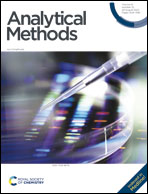Identification of hepatocellular carcinoma and paracancerous tissue based on the peak area in FTIR microspectroscopy
Abstract
Hepatocellular carcinoma (HCC) is one of the most common primary hepatic malignancies across the world. The annual incidence and death rates have increased at the highest rate of all cancers in recent years. Surgical resection is a potentially curative option for solitary HCC or unilobar disease without evidence of metastases or vascular invasion. This study focuses on the molecular differences between the HCC foci and paracancerous tissues and provides some valuable biomarkers based on the vibrational spectrum. Fourier transform infrared (FTIR) spectroscopy is a non-invasive and qualitative and semi-quantitative analysis technique that has been widely applied for the identification of macromolecular changes in biological tissues. In this study, the FTIR spectra of the HCC foci and the paracancerous tissues were recorded separately, and ten areas under the absorption peaks of all the specimens were calculated. The result demonstrates that the areas of protein-related absorption peaks at 1398 cm−1, 1548 cm−1, 1654 cm−1 and 3070 cm−1 may be the key indicators of the two different regions. After coupling with the classification algorithms of k-nearest neighbor (KNN), random forest (RF) and support vector machine (SVM), it was found that SVM with an RBF kernel performed best with the AUC (area under the ROC curve) reaching 0.997, and the performance was better than the feature based on the full spectrum. This reveals that the peak area-based FTIR spectra combined with the SVM algorithm may be a promising tool in identifying the HCC foci and the paracancerous tissues.



 Please wait while we load your content...
Please wait while we load your content...